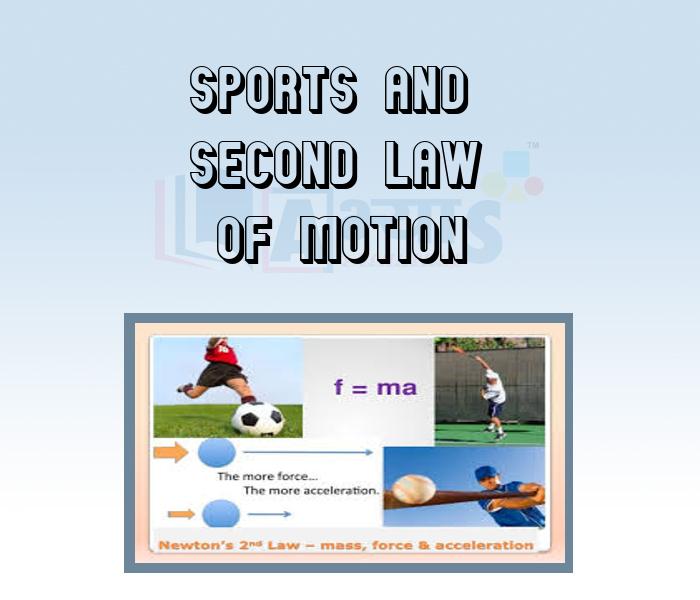Sports and Second Law of Motion


Sports and Second Law of Motion
Sports and Second Law of Motion
1. A cricket player or fielder moves his hands backward while catching a fast cricket ball. This allows the fielder to catch the ball by applying a small force on it. If you keep your arms still while catching, the fielder has to apply a larger force on the ball. When we pull arms back with the ball. We apply a smaller force for a longer time. This is because the ball stops completely only when the hands stops moving.
Explanation: Suppose the ball is moving with a speed u. When it stops completely, its speed is v = 0.Suppose ,in the first case, when you pull your arms back, it takes time to stop the ball. The acceleration of the ball in this period is
Similarly, if the time taken to stop the ball is in the second case,
The force in the two cases are
and
As is much larger than
, that force
is much larger than
. A cricket coach, therefore , advise you to pull back your arms while taking a catch, as this would be easier.
2. When an athlete jumps from a height on a hard surface, he can hurt his feet.
Explanation:
This is because the feet come to rest in a very short time and hence the force exerted on the feet is high. That is why athletes during high jump land on sand or foams. This increases the time in which the body comes to rest. The sand gives way allowing the body to slow down gradually.
A passenger in a moving train tosses a coin which falls behind him. Observing this statement what can you say about the motion of the train ? | |||
| Right Option : A | |||
| View Explanation | |||
A long jumper runs before jumping to take long jump because __________________ | |||
| Right Option : D | |||
| View Explanation | |||
A goalkeeper in a game of football pulls his hands backwards after holding the ball shot at the goal. This enables the goalkeeper to ___________________
| |||
| Right Option : D | |||
| View Explanation | |||
Students / Parents Reviews [10]
Being a parent, I saw my daughter improvement in her studies by seeing a good result in all day to day compititive exam TMO, NSO, IEO etc and as well as studies. I have got a fruitful result from my daughter.

Prisha Gupta
8thMy experience was very good with Abhyas academy. I am studying here from 6th class and I am satisfied by its results in my life. I improved a lot here ahead of school syllabus.

Ayan Ghosh
8thIt was a good experience with Abhyas Academy. I even faced problems in starting but slowly and steadily overcomed. Especially reasoning classes helped me a lot.

Cheshta
10thI have spent a wonderful time in Abhyas academy. It has made my reasoning more apt, English more stronger and Maths an interesting subject for me. It has given me a habbit of self studying

Yatharthi Sharma
10thOne of the best institutes to develope a child interest in studies.Provides SST and English knowledge also unlike other institutes. Teachers are co operative and friendly online tests andPPT develope practical knowledge also.

Aman Kumar Shrivastava
10thIt has a great methodology. Students here can get analysis to their test quickly.We can learn easily through PPTs and the testing methods are good. We know that where we have to practice

Barkha Arora
10thIt was good as the experience because as we had come here we had been improved in a such envirnment created here.Extra is taught which is beneficial for future.

Eshan Arora
8thMy experience with Abhyas academy is very good. I did not think that my every subject coming here will be so strong. The main thing is that the online tests had made me learn here more things.

Hiya Gupta
8thMy experience with Abhyas is very good. I have learnt many things here like vedic maths and reasoning also. Teachers here first take our doubts and then there are assignments to verify our weak points.

Shivam Rana
7thAbhyas is a complete education Institute. Here extreme care is taken by teacher with the help of regular exam. Extra classes also conducted by the institute, if the student is weak.
